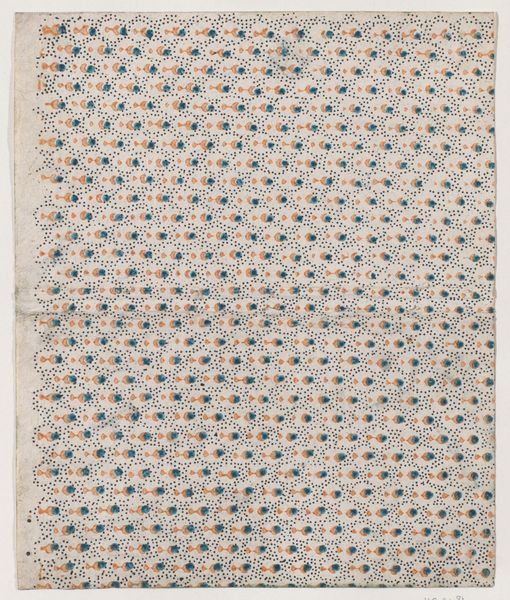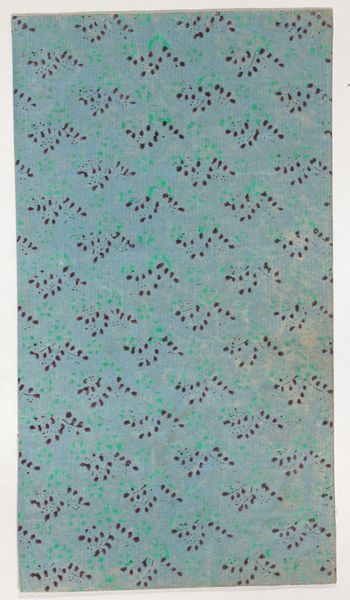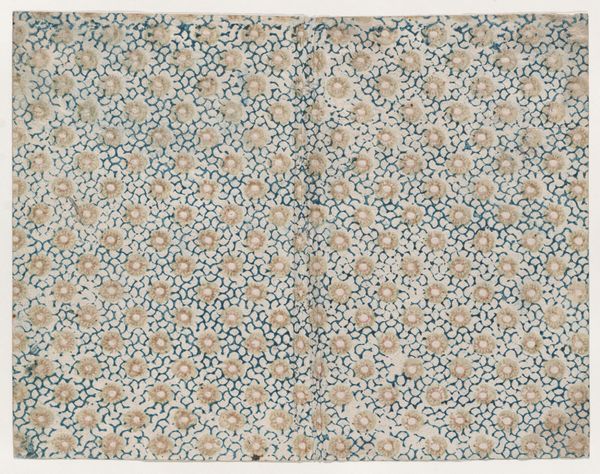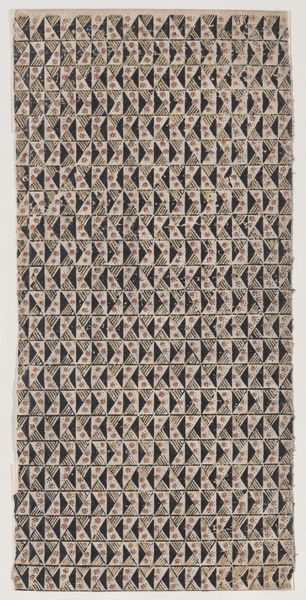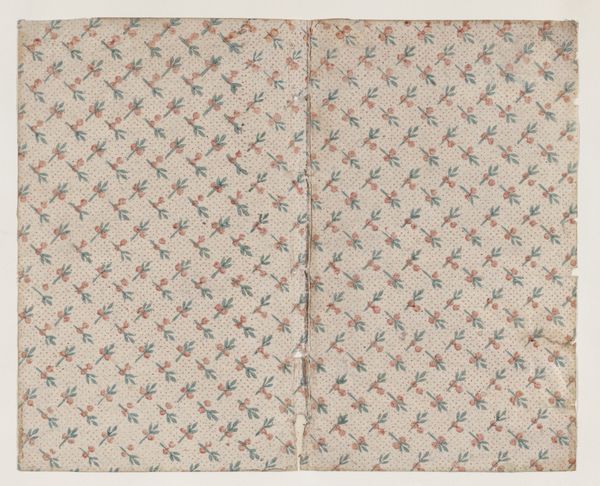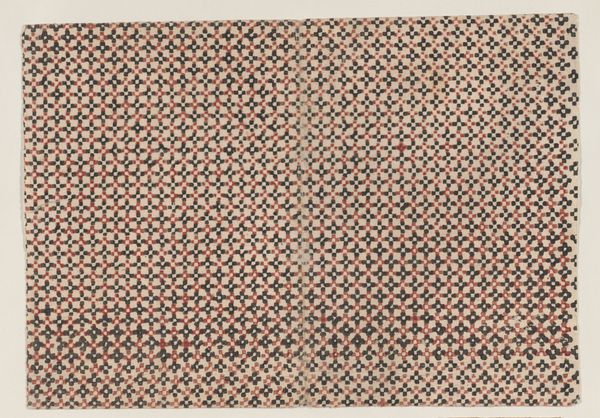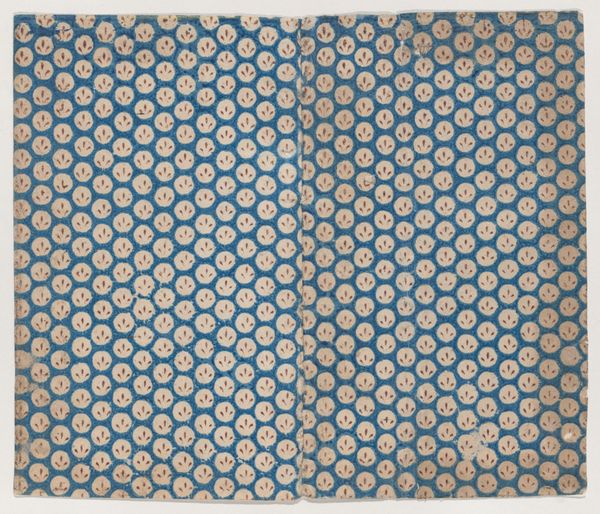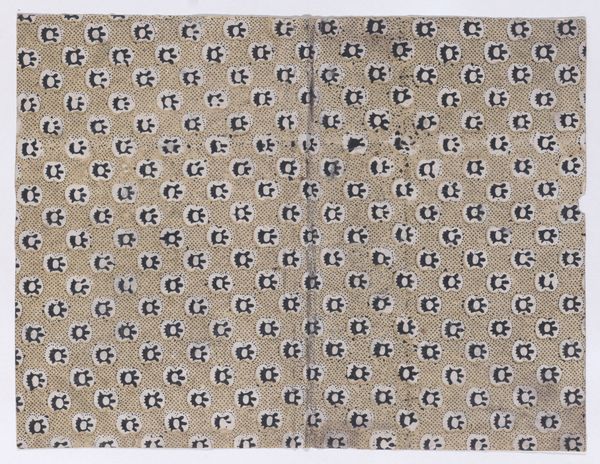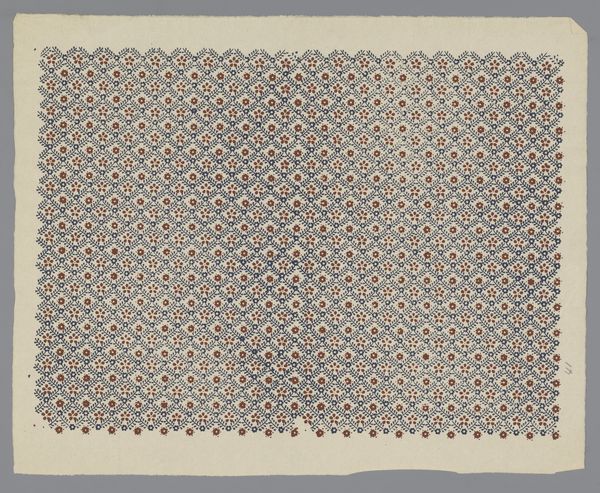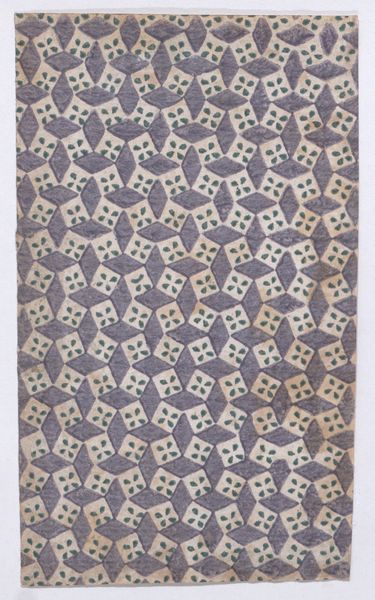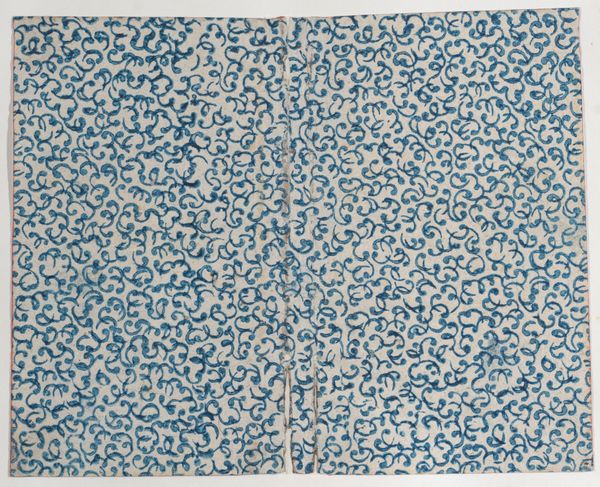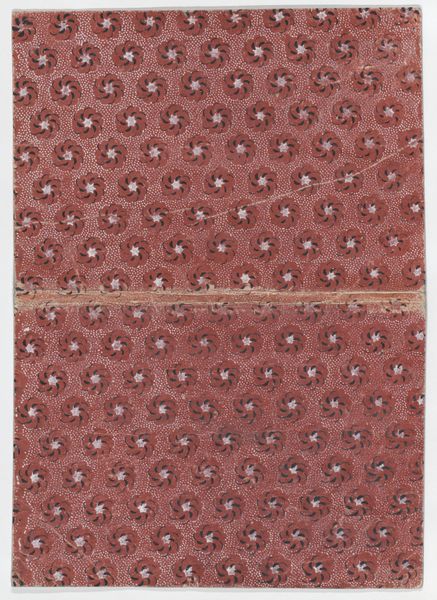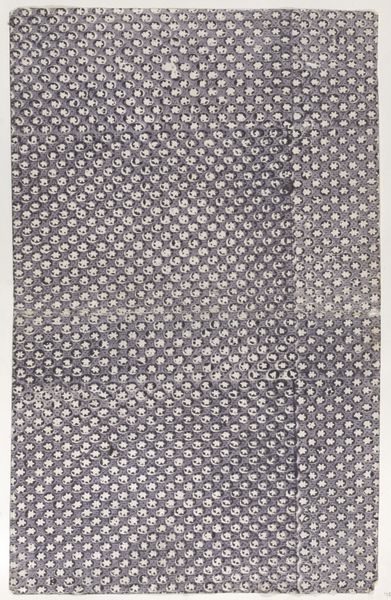
Book cover with overall green and black abstract pattern 1800 - 1900
0:00
0:00
drawing, print
#
drawing
#
organic
# print
#
geometric pattern
#
organic pattern
#
geometric
#
decorative-art
Dimensions: Sheet: 7 15/16 × 10 9/16 in. (20.1 × 26.8 cm)
Copyright: Public Domain
Curator: Welcome. We are looking at an intriguing book cover housed here at The Metropolitan Museum of Art. Created anonymously, probably sometime in the 19th century, it features an all-over pattern in green and black. Editor: My first thought is actually quite calming, perhaps because of the green hues. The design has a somewhat hypnotizing quality, doesn't it? Very repetitive, almost soothing in its relentless geometry. Curator: Indeed. While the organic feel you pointed out does exist, it is undeniable that its geometric abstraction is an important aesthetic of that time period and its design speaks volumes about contemporary tastes and decorative arts trends. Editor: Precisely! The print medium employed would've allowed mass production, lowering costs, but how might the artists have viewed the tension between these aspirations and the more luxurious crafts they could have worked with? Curator: That's a superb point! Consider the evolving book industry back then and how design impacts the reader. Such mass-produced images also acted as markers of education and social standing, of participating in cultural consumption. Editor: Absolutely, it shows this push and pull that arises within an industrialized age, a balance of labor and machine to produce patterns of consumption. To achieve a fine-art goal through means of the reproducible image. Curator: Exactly, this book cover shows so much, the history of manufacturing, the economics that underpins decorative production, and how museums like ours make such work part of public and cultural discussions. Editor: Absolutely. It gives you so much more to consider about our mass-produced objects and all the work we as laborers put in for simple material results. Curator: We can therefore, perhaps consider it an emblem of its era, showing both anxieties about, and aspirations of modernity, bound into one small object. Editor: Right, even simple book covers can hold layers of questions and observations about production!
Comments
No comments
Be the first to comment and join the conversation on the ultimate creative platform.
